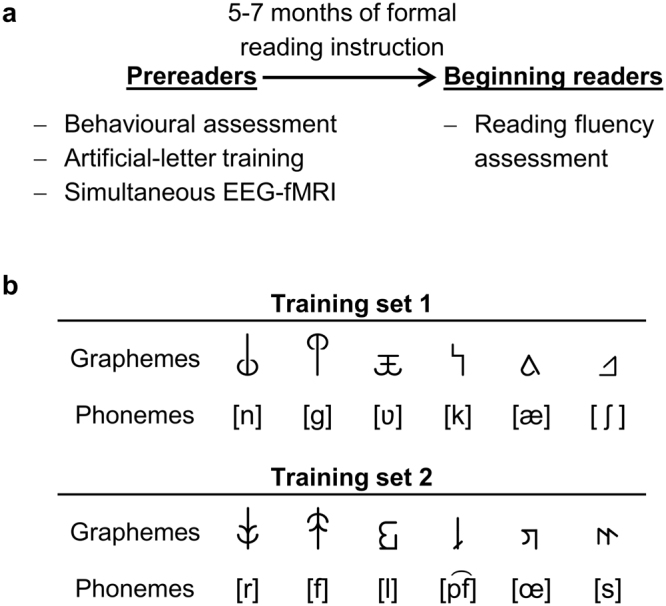Figure 1.

Study design and experimental stimuli. (a) In a longitudinal study design, participants were tested before and after the onset of formal reading instruction at school. (b) Stimulus sets used in the artificial-letter training and the implicit audiovisual target detection task. Participants were randomly assigned to learn one of two matched sets of grapheme–phoneme correspondences. In a simultaneous EEG-fMRI session, correct (congruent condition) and incorrect (incongruent condition) pairs of trained graphemes and phonemes were presented to the participants. Phonemes are presented in phonetic notation; phonemic notation from left to right for training set 1 is /n/, /g/, /w/, /k/, /ä/, and /sch/ and for training set 2 /r/, /f/, /l/, /pf/, /ö/, and /s/.
